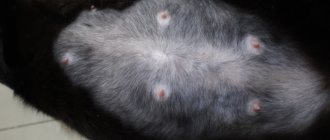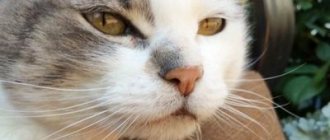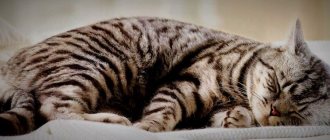Low pulse is one of the complaints of patients in cardiology departments. This phenomenon can cause many unpleasant moments, since it is accompanied by fainting states, weakness, cold sweat, dizziness, often being a sign of serious illness. Its systematic occurrence is a reason to seek professional medical help.
In order to find out the cause of a rare pulse, the doctor prescribes comprehensive diagnostic tests to identify existing problems. The pulse is represented by jerky oscillations of the arterial walls, by which the heart rate can be tracked and, having identified their violations, appropriate measures can be taken.
If you look at the accepted indicators of normal heart rate for different ages, you can conclude that it decreases as you get older. This is due to the growth of the muscular middle layer, known as the myocardium. The larger the volume of the heart, the fewer beats it needs to make in order to pump blood.
Causes of low heart rate
Despite the fact that the maximum frequency indicators can be called conditional and individual, depending on a number of factors (undoubtedly, within certain limits), the pulse is below 50 beats/min. - a sign of the presence of a disease. Its reduction to forty beats poses a threat to health and life, since the brain suffers from oxygen starvation. If it does not exceed forty beats within seven days, this is a sign of bradycardia, and with a progressive decrease, you should urgently seek professional medical help.
Almost all initiating factors of a pulse below normal are related to pathological conditions. For convenience, experts divide them into different categories, which can be found in our table.
| Category of reasons | How is it manifested? |
| Physiological | There are a number of natural factors and external influences that initiate a low pulse at normal pressure. Such conditions are not dangerous. This:
|
| Cardiological | The reasons for low blood pressure and low pulse may lie in the weakness of such a vital organ as the heart. They occur in the following diseases:
|
| Toxicological | Low blood pressure and low pulse can develop due to interaction with toxic substances when:
|
| Associated pathological conditions |
|
Low heart rate in the elderly is associated with age-related changes in the body. It often develops due to concomitant diseases or a natural slowdown in the body’s metabolic processes.
Methods for measuring heart rate in cats
Sometimes, in order not to miss any disease in your pet, it is enough to simply measure its pulse in time. Let's look at how this is done. We humans, when we want to count our heart rate, we squeeze the wrist area. Where is a cat's pulse? The easiest way for an animal to feel the pulsation of the large femoral artery is to press on the inside of the thigh (in the groin, where the cat's leg connects to the body). But here we note that some wayward pets may simply not allow the owner to touch the groin area.
The cat's pulse rate is usually measured over 1 minute. But what if the cat is indignant (breaks out, tries to bite, hisses, etc.)? Measurement time can be halved or quadrupled. For an aggressive pet, the measurement time can be reduced to 15 seconds, and then simply multiply the resulting value by 4 (the result of a 30-second measurement must be increased by 2).
When figuring out what your cat's heart rate is, it's important to keep these things in mind:
- Pulse counting should be done when the animal is as calm as possible
. An excited cat's pulse is always significantly higher than normal; - During the measurement, the owner should under no circumstances shout at the cat
, hit or squeeze it forcefully. This will cause the pulse of the unnerved animal to jump up; - You should not measure the pulse of a sleeping pet
. During sleep, cats' heart rate is lower than when awake; - There is no need to press with great force on the cat's groin
. With strong pressure, it is difficult to calculate the pulse rate correctly.
Clinical manifestations of low heart rate
A moderate decrease in pressure most often does not lead to the development of clinical manifestations and is not accompanied by circulatory disorders. However, with a heart rate of no more than forty beats per minute, the following are observed:
- dizziness;
- weakness;
- semi-fainting and fainting;
- feeling of constant fatigue;
- labored breathing;
- pain symptoms in the chest area;
- blood pressure surges;
- inability to concentrate;
- forgetfulness;
- visual impairment.
Symptoms with a low pulse correspond to circulatory disorders that appear against its background. So, if it is slowed down, the brain suffers from a lack of oxygen and hypoxia develops (that is, oxygen starvation). As a result, the patient is susceptible to convulsions and loss of consciousness, lasting from several seconds to one minute. Such conditions are life-threatening and can cause respiratory arrest and therefore require immediate medical attention.
Characteristics
The ability to control the condition of your pets can save their lives.
An owner who has knowledge of the pulse of kittens and big cats will be able to promptly notify the veterinarian about problems with the pet’s health. The pulse of cats and cats has the following characteristics:
- Filling is the volume of blood in the vessels at the highest point of pulsation.
- Tension is the amount of force applied when squeezing an artery.
- Frequency - how many times the heart contracts (beats) per minute.
- Shape—the rate of change in arterial volume.
- Height is the range of vibration of the vessel wall.
- Rhythm - the interval between shocks.
Diagnosis of low heart rate
Determining the causes of a pathologically low pulse requires a comprehensive diagnosis. First of all, the doctor listens to the patient’s complaints, collects anamnesis and conducts an examination. If bradycardia (i.e., decreased heart rate) is detected, the patient is prescribed a consultation with a cardiologist. As for diagnostic studies, they are as follows:
- Electrocardiography;
- Daily Holter monitoring;
- Ultrasound scan of the heart;
- EchoCG;
- Bicycle ergometry.
In addition, if necessary, TEE can be performed, which allows one to study the conduction pathways of the heart and determine the organic or functional nature of the disease.
Diagnosis information
The veterinarian will need to obtain all the necessary information from the animal’s owner, including information about the animal’s chronic diseases, which may have caused the development of tachycardia. Blood, urine and electrolyte tests are needed. The latter is very important: you need to find out whether the animal has developed hypokalemia or hypomagnesemia. These pathologies always lead to disturbances in the functioning of the heart. Blood biochemistry will help find signs of pancreatitis or hyperthyroidism. An echocardiogram is used to perform an accurate analysis, as well as to determine the extent of the process.
But the most important and guaranteed reliable method is taking an electrocardiogram (ECG). The graph will allow you to visualize the distribution of electric current in the heart muscle, which will allow you to identify almost any cardiac pathology. An echocardiogram is also important, used to check for structural heart disease. Currently, the most “advanced” clinics offer services for attaching special autonomous cardiac monitors. Such a device records heart rate and breathing rate every second, while simultaneously taking an ECG. This allows you to determine the cause of the disease as accurately as possible, but such diagnostics are not cheap.
Treatment for low heart rate
A moderate decrease in heart rate that occurs without symptoms does not require therapy. However, if it exists, the underlying pathology must be treated. The strategy depends on the underlying disease, but in any case is aimed at:
- Elimination of symptoms of low heart rate;
- Eliminating the risk of heart rhythm disturbances;
- Prevention of thrombosis development.
If the problem arose as a result of uncontrolled use of pharmacological drugs, their dose is adjusted - or, if they are not needed, completely canceled.
Therapy
In many cases of mild tachycardia, treatment consists of prescribing medications that help restore normal electrolyte balance. If the cat is unstable (severe weakness, fainting, or arrhythmic episodes), hospitalization and treatment in a clinical setting with continuous intravenous drug infusion may be required. Once the animal's condition has stabilized, oral medications may be prescribed. It should be remembered that all medications prescribed by the veterinarian must be given to the animal in strict accordance with his instructions. This is due to the possibility of relapses of the disease. Finally, older and weaker cats often require lifelong treatment, as the worn-out heart requires constant support.
How to quickly increase your heart rate?
If a rare pulse is not a symptom of heart disease and appears for physiological reasons, you can speed it up and eliminate unpleasant symptoms by using simple remedies available in almost every home. Before starting activities, it is important to take into account the circumstances under which the heart rate decreased.
| Initiating factor | How and with what is it manifested? |
| Stress, shock, nervous disorders | If the heart rate decreases to forty beats per minute or below, you can take sedatives:
|
| Decreased blood pressure and pulse | The best option is to take decoctions for:
|
| Increased blood pressure and decreased heart rate | The best solution would be:
|
| Pregnancy |
|
If a person is sufficiently resilient and healthy, physical activity (from running, jumping and squats to cardio exercises) would be a good option.
Prevention of rare pulse
Preventive measures boil down to timely treatment of organic heart lesions, elimination of the effects of toxic substances on the myocardium, competent selection of doses of pharmacological drugs and their administration under medical supervision. Don't forget to make regular preventive visits to your therapist and cardiologist.
Make an appointment with CELT specialists and find out the reasons for your rare pulse without delay.
Make an appointment through the application or by calling +7 +7 We work every day:
- Monday—Friday: 8.00—20.00
- Saturday: 8.00–18.00
- Sunday is a day off
The nearest metro and MCC stations to the clinic:
- Highway of Enthusiasts or Perovo
- Partisan
- Enthusiast Highway
Driving directions











